Mapping What’s at Stake: The Impact of SNAP on North Carolina’s Families and Local Economies
Every county in North Carolina benefits from federal food assistance. Each month, SNAP (aka food stamps) dollars flow into every community, helping families put food on the table and keep up with rising costs. They also keep local grocery stores open, support jobs, and strengthen local economies.
That critical support is now at risk. Without congressional or executive action, thousands of North Carolina families who rely on SNAP dollars will be cut off from their benefits starting Nov. 1.
While the administration claims it lacks the power to extend SNAP funding, that is simply false. It is both legally obligated and fully authorized to tap contingency funds to keep $240 million in monthly food assistance flowing into North Carolina, but the U.S. Department of Agriculture and the Trump Administration has refused to do so — using families’ access to food as leverage in budget negotiations. Each day the government shutdown continues without SNAP funding, more families go hungry and local economies grow weaker.
Even beyond the shutdown threat, the harmful megabill that Congress passed this summer will shift hundreds of millions of annual SNAP program costs onto North Carolina — costs that were previously covered by federal funds. The maps below show how vital SNAP is to families, businesses, and local economies across the state.
Families in every county rely on food assistance.
Without SNAP funding, more than 1.4 million North Carolinians will lose the support they count on to afford food each month at a time when food costs are already high. In some counties such as Robeson, Scotland, and Edgecombe, the share of residents who count on SNAP for accessing food is as high as 1 in 3 people.
Food assistance helps families stay fed and keeps children from going hungry.
If SNAP funding is cut, food insecurity will rise across every county, leaving families without consistent access to nutritious food. Children are especially vulnerable as they already face higher rates of hunger than the overall population in nearly every county. In every county across North Carolina, at least 1 in 10 residents experiences food insecurity, with rates as high as 1 in 5 in some counties. For these North Carolinians, SNAP is an indispensable resource to keep children fed and families healthy.
SNAP benefits drive local spending and support local economies.
In addition to feeding families, SNAP benefits circulate in local economies. Every SNAP dollar that someone spends on food generates up to $1.80 in local economic activity. In larger counties, this means tens of millions of dollars, and SNAP benefits also provide a crucial economic boost in small rural counties. Avery County, for example, receives about $300,000 in SNAP dollars monthly, which can ultimately contribute to over $500,000 in economic impact. This means that cuts to the program would ripple through North Carolina’s economy, hurting local businesses, putting local jobs at risk, and raising grocery prices.
SNAP spending keeps local grocery stores in business.
Across North Carolina’s 100 counties, SNAP spending supports thousands of food retailers and local jobs. Losing SNAP funding — both in the short term and from long-term cuts — could force stores to close, putting families with little access to groceries most at risk. As many as 1,400 of these grocery retailers — mostly in rural areas — are at risk of closing due to SNAP cuts, leaving more communities without access to affordable food.






